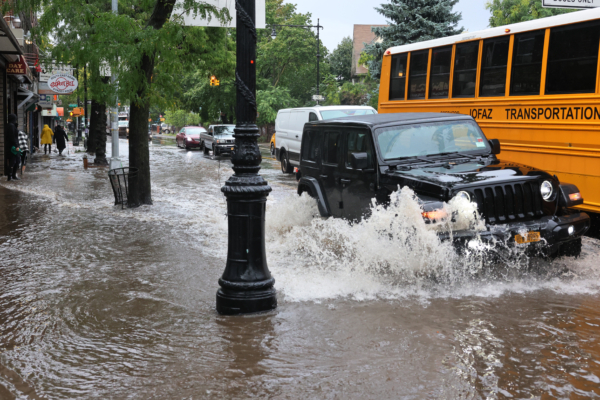In the latest five-year risk assessment report by the New York City Department of Health and Mental Hygiene (DOHMH), it is pointed out that floods, disease outbreaks, and cyber attacks will be the major threats affecting the health and safety of New York City residents in the next hundred years.
The report, funded by the Centers for Disease Control and Prevention (CDC) Emergency Response Program, compiled hundreds of responses from medical, emergency, and various civilian units to evaluate natural and man-made risks that could lead to widespread disease and infrastructure paralysis.
This five-year “Jurisdictional Risk Assessment” (JRA) collects relevant information on public health hazards, conducts analysis, and identifies the most serious threats based on the likelihood of causing public health disasters. The most significant public health hazards include floods, disease outbreaks, cyber attacks, coastal storms, and epidemics.
Public health hazards refer to events that may cause widespread disease transmission or adverse health effects, including natural disasters (such as coastal storms or extreme heat) and man-made disasters (such as hazardous material leaks or cyber attacks). These hazards pose challenges to the city’s daily operations and emergency response capabilities, impacting the health of New York City residents.
According to the report, floods are currently the most pressing threat, with high occurrence frequencies and the potential to become the norm. Since Hurricane Sandy in 2012, New York City has been repeatedly impacted by flooding, affecting power, housing, and healthcare systems. In 2021, Hurricane Ida caused at least 13 deaths from basement flooding and led to widespread infrastructure paralysis and displacement of residents.
Infectious diseases are also cited as one of the threats for the next hundred years. The report states that whether it is outbreaks like Ebola, measles, Legionnaires’ disease, or global pandemics like COVID-19, these are enough to put immense pressure on the healthcare system. Mitch Stribling, Director of the Columbia University New York City Preparedness and Resilience Research Institute, mentioned that New York City, as a global hub with a dense population and significant socio-economic disparities, faces greater challenges in epidemic prevention and control.
Furthermore, the report highlights cyber attacks as a high-risk factor, emphasizing that as medical and emergency systems increasingly rely on network information technology, cybersecurity incidents pose a growing threat to municipal operations. Extreme heat, chemical threats, and hazardous waste leaks are also listed as important risks.
For those interested, the report can be accessed via the following link: https://storymaps.arcgis.com/stories/498014fede58495dae447d97c6bf1611

